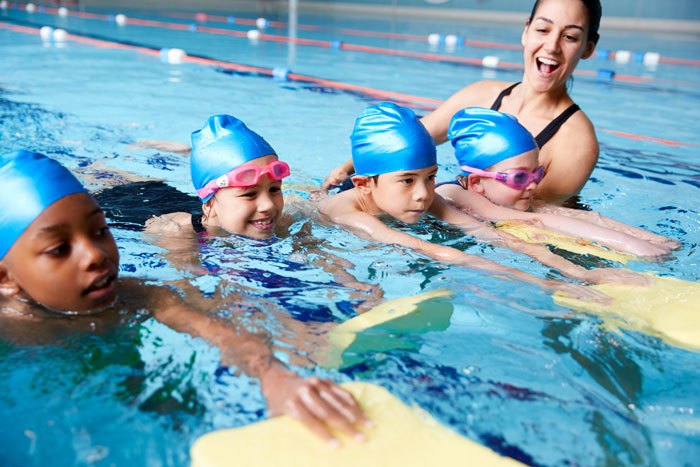There's plenty of focus on the educational losses of the pandemic in academic terms, but the shutdowns also led to a dearth of opportunities to learn to swim. Now's the time to address the need to teach everyone how to be safe in the water.
By Rowdy Gaines
During peak summer season across the country, people naturally gravitate to the water where and when they can. This is good news for recreation, sports and fitness facilities that have swimming pools or other aquatic features on the property looking to boost visitors. It is great for communities to have access to such facilities, too.
Now that the peak summer swimming season is past, you might be sitting back and thinking about how to improve your facilities, operations and programming. While usage is an important part of facility management and operations, it is critical for safety to be top of mind—especially with rising drowning rates in the U.S.
Drowning is the leading cause of injury death for children ages 1 to 4 and the second leading cause for children ages 5 to 14, according to the Centers for Disease Control and Prevention (CDC). This public health epidemic is alarming, but it is also preventable. Facilities with onsite pools and water activities can play a role in helping to reverse the trend through learn-to-swim programming and enhanced protection measures.
Learn-to-Swim Programming
Learning to swim from a qualified instructor reduces the risk of drowning by 88% for children ages 1 to 4. This means access to swimming lessons and educational programming around it have the potential to save lives and empower even our youngest swimmers to be confident in the water.
The more exposure people have to water, the more important safety becomes at all avenues. Understanding the basics of swimming is an immediate first step, and it is important to consider the types of programming offered at community facilities to put the best safety plan in place. Swimming lessons are common at facilities with aquatics (74.3%), though many other aquatic activities are also offered, including aquatic exercise programs (64.9% of aquatic facilities) and water sports, such as canoeing and kayaking (14.8% of all respondents), based on Recreation Management’s 2022 State of the Industry Report.
Implementing safety programs and supporting organizations that provide swimming lessons from qualified professionals will result in safer swimmers. At Step Into Swim, a philanthropic initiative of the Pool & Hot Tub Alliance (PHTA), we are committed to creating more swimmers and driving positive change in swimming safety. This endeavor gifts grants to learn-to-swim providers and secures funding for those who don’t have financial access to swimming lessons.
Step Into Swim has established robust partnerships with swimming programs at facilities across the U.S., and has granted funding to provide swim lessons to more than 285,000 children since 2012. It is a valuable resource for both swim providers and families looking to keep their children safe in the water.
Enhanced Protection Measures
Facility executives have a responsibility to protect the health and safety of their patrons. In addition to swimming lessons and safety programs, layers of protection provide added barriers to help prevent drowning. This includes staffing facilities with certified lifeguards, restricting pool and water access after hours, establishing clear pool rules, and securing the pool area with a fence, alarm or surveillance system.
Swimming safety is an industry-wide priority we can all agree on. It is personal to me as well because I am a lifelong swimmer and advocate. I speak about it on a national level, practice swimming safety with my children and grandchildren, and work with many industry partners to fund and support lifesaving initiatives.
Join me in making waves against drowning. Together, we can accomplish great things and keep our communities safe in and around water. RM
ABOUT THE AUTHOR
Rowdy Gaines is a three-time Olympic Gold Medalist who serves as the vice president of partnerships at the Pool & Hot Tub Alliance. Gaines leads PHTA’s Step Into Swim initiative committed to safe swim education and drowning prevention. Learn more at www.stepintoswim.org.



